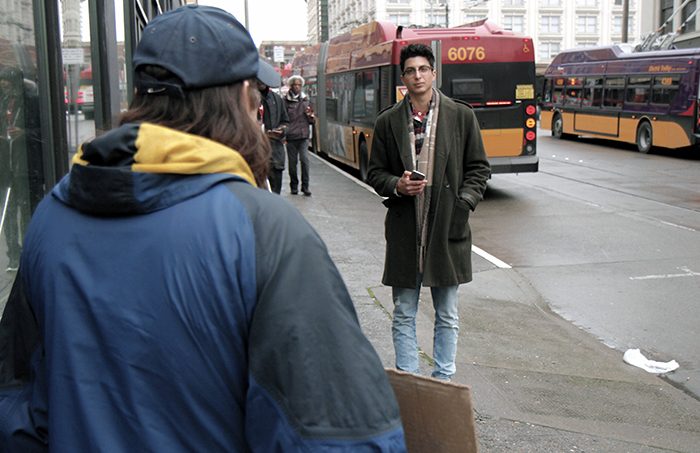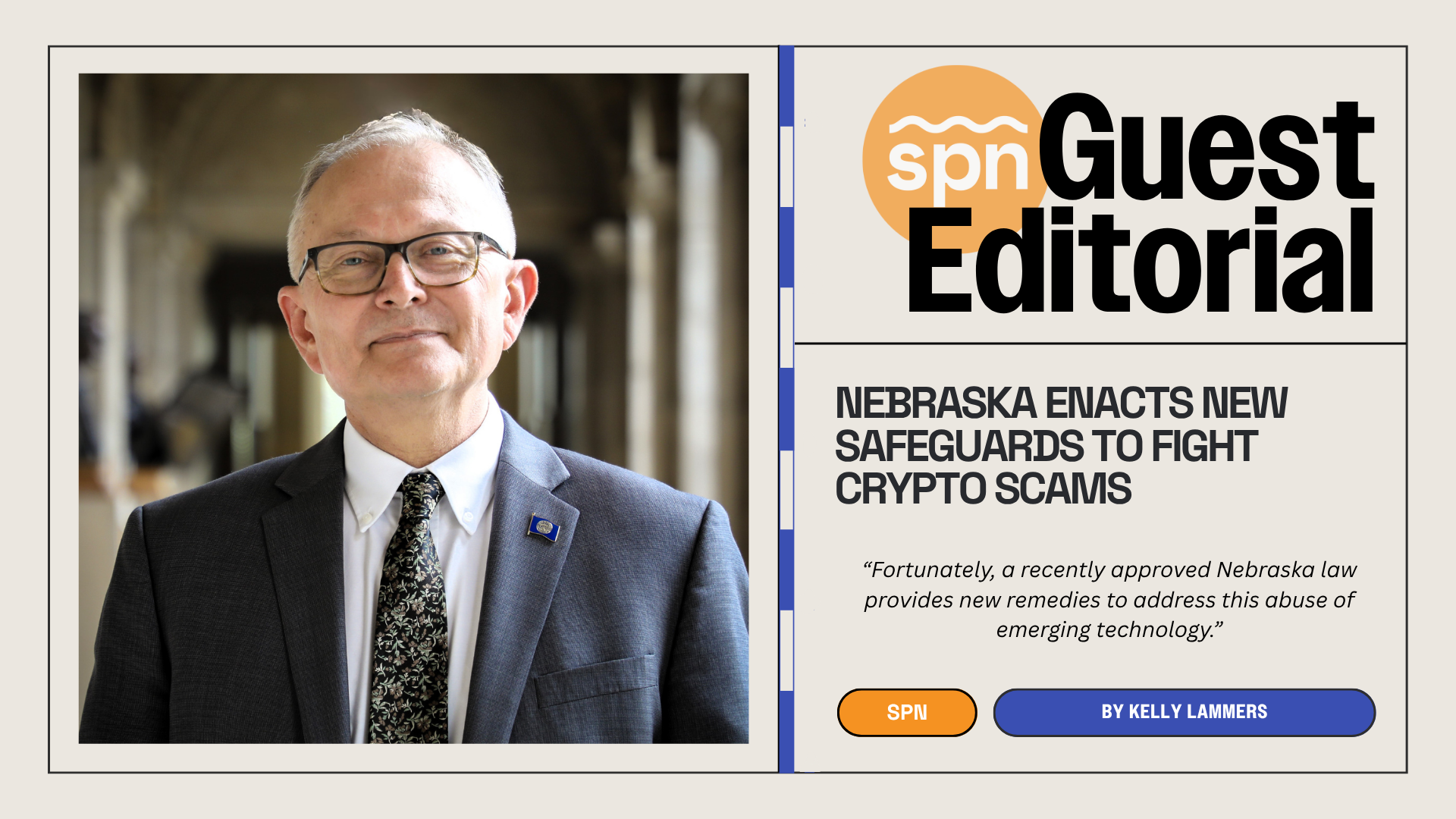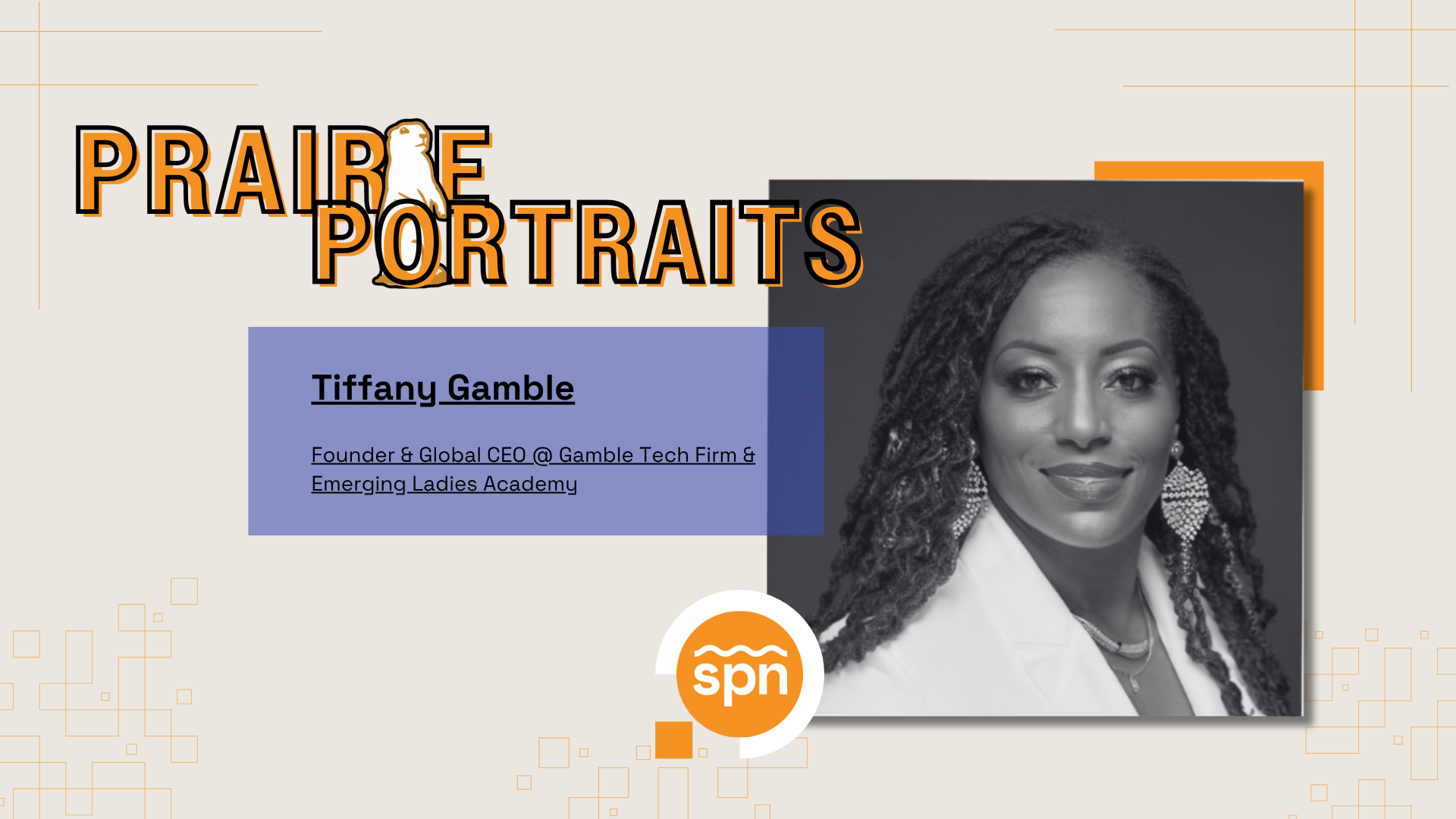“Walk with, not by.”
So goes motto for Samaritan, a mobile app that helps users fight homelessness through direct, case-managed giving.
It’s a slogan that rejects slacktivism for what could be called “app-tivism”—the use of consumer apps to generate meaningful social action.
More than just sharing news of a cause or signaling one’s ethos with a digital signature—two hallmarks of slacktivism—app-tivism requires tangible action: money raised, lives changed.
How Samaritan makes a difference.
Samaritan uses a story-driven app that feeds user donations and crowdsourced words of encouragement to people experiencing homelessness. A local social service provider works with the unhoused person to help them reach goals that will eventually get them off the street.
It’s powerful, digitally mediated philanthropy. And it’s inspiring a team of young IT entrepreneurs in Omaha to develop their own social media solution, one that calls attention to stories that often go unnoticed, one that allows users to directly help the people featured in those stories (more on that later).
 Through Samaritan, users can read the stories, life goals and immediate needs of their unhoused neighbors. If the spirit of altruism moves them, they can donate money, offer words of encouragement, or both. The app’s UI includes relevant links to resources and a Venmo-style community newsfeed that lists the donations users make and keeps people updated on the progress of Samaritan’s beneficiaries.
Through Samaritan, users can read the stories, life goals and immediate needs of their unhoused neighbors. If the spirit of altruism moves them, they can donate money, offer words of encouragement, or both. The app’s UI includes relevant links to resources and a Venmo-style community newsfeed that lists the donations users make and keeps people updated on the progress of Samaritan’s beneficiaries.
On the other side of the app, an unhoused person receives a nondescript multipurpose keychain-like beacon from the social service provider administering the Samaritan project locally. The beacon can be redeemed for money to purchase food, personal hygiene items, clothing, phone service or medication from participating stores. Individuals meet with their case managers once per month to maintain access to these funds and monitor the progress they’ve made toward their goals.
The beacon also permanently stores electronic versions of vital documents like state IDs and work permits. These documents, if lost or stolen, can be prohibitively expensive and difficult to replace. Unfortunately, such loss and theft is common among the unhoused and makes escaping homelessness nearly impossible. Having a permanent repository of personal information adds a much-needed layer of security for unhoused individuals.
Moreover, the Bluetooth-enabled beacon sends a notification to nearby Samaritan users whenever they come within about 20 yards of an unhoused person. The app pulls up that person’s profile and allows users to learn about and empathize with someone they might otherwise have ignored.
“Samaritan creates an opportunity to do more than just digitally give,” said Staci Sanger, Vice President for City Care, a nonprofit that administers Samaritan in Oklahoma City.
“It’s much deeper than that. It’s true community,” she said.
Currently operating in Seattle, Los Angeles and (starting next month) Oklahoma City, Samaritan plans to expand to 100 cities eventually. Users can still make donations from anywhere in the world, though, even if Samaritan is not yet in their area.
Forget impulse buying. Samaritan facilitates impulse giving.
On first launching the app, the user is provided a $1 donation credit and the profile of a Samaritan beacon holder with their life story written in their own words.

Laura, for instance, had been in and out of jail for the past few years and had trouble adjusting to freedom.
“Every time I got out I would end up back on the streets with the same crowd doing the same old things,” she wrote on her profile. “I am now sober and attending Celebrate Recovery. I am also enrolled in school to finish my high school diploma. I want to pursue college and a career helping others. I want to help kids get off the streets and be a beacon of hope because I was once hopeless.”
Laura’s most recent top need was $40 for a bus pass to help her get between her recovery program, school, the grocery store and her case manager at the Illumination Foundation, which administers Samaritan in Southern California.
After reading one person’s story, it is easy to get sucked down a rabbit hole of altruism reading everyone’s stories, finding out about their goals and needs, and developing a human connection despite great distance.
The app made donation a cinch.
Indeed, Samaritan has the potential to disrupt the social service delivery and charitable giving models. In an ingenious stroke of behavioral economics, it combines the compulsiveness of social media use with the wallet-opening ease of Amazon One-Click.
One in three unhoused people have been hit or kicked for being homeless.
It’s more than the ease of direct giving that makes Samaritan innovative. The ability for users to send encouraging personal messages goes a long way, too. Verbal support helps people feel they are competent and worthy of respect—messages that unhoused people, about one in three of whom have been deliberately hit or kicked for being homeless, do not hear often enough.
According to Samaritan’s Medium blog, lack of connection to people is often cited as the most dehumani
zing and discouraging aspect of experiencing homelessness, worse than a lack of resources.
So it’s no surprise crowdsourced messages of support have made a real difference in the lives of Samaritan participants. Beacon holder John W. of Seattle received so many well wishes from strangers he decided to extend a corresponding level of kindness toward himself and enter treatment to overcome his addiction.
The powerful results of Samaritan’s pilot project in Seattle appealed to Oklahoma City non-profit City Care. The organization successfully lobbied Samaritan to choose the city as the next place to launch its services, Stanger remarked.
“Honestly, the most impressive thing to us was the success [unhoused individuals] were having. As people were meeting with case managers monthly, their success rate of ending up in housing or finding counseling, or whatever else they were needing, was extremely high, especially for a pilot project,” she said.
For individuals who care deeply about the plight of the unhoused population, Samaritan presents a convenient, repeatable, tech-driven solution, with self-reinforcement built right into the platform. Americans glance at their phones an average of 96 times per day. Samaritan increases the odds that one of those times will offer the chance to go beyond the self and directly help the world—dollar by dollar, neighbor by neighbor.![]()
Sojourn
One can imagine Samaritan inspiring further apptivism. That’s what happened this spring in the University of Nebraska at Omaha entrepreneurship class “Forming a Disruptive Startup,” a capstone course taught by STEM educator, startup investor and tech entrepreneurial-ecosystem builder Roger Kassebaum.
Sophomore Computer Science major Michael Feldmann and two other students were tasked with taking a product from start to finish over the course of a semester.
Partly inspired by Samaritan, the group prototyped an app that would harness the addictiveness of content-seeking and direct that behavior toward altruism, Feldmann told an expert panel that included Silicon Prairie News, VCs, and local entrepreneurs during an end-of-semester pitch.
Candidly, Feldmann said he and most of his contemporaries were pretty much addicted to digital content and social media—that wasn’t going away—but none of them enjoyed how the near-constant influx of negative and useless content made them feel. So they decided to build a platform that would only feature uplifting content and socially useful stories, as well as the functionality to let users immediately support the people featured in those stories.
That’s how Sojourn was born.
“Instead of pushing out a lot of content that isn’t great for people and doesn’t really matter, like all this garbage you see on Instagram and Facebook and Snapchat sponsored stories, we’re going to curate content that shows the struggles in people’s lives and how they’re being helped by other people,” Feldmann said.
Though still in its prototype phase, Sojourn combines elements of social media, curated content and a direct-giving platform. Users can swipe through different stories, comment on them, and then donate money or take some other tangible action to support the stories and causes that excite their compassion.
Sojourn is designed to spotlight stories where the human spirit intersects with social issues, such as the work of organization dedicated to increasing access to healthy foods and entrepreneurship in Omaha or the story of an ex-gang member who, feeling guilt about his past, started showing up at high school football games to defuse potential fights, then landed a full-time job as a gang intervention specialist, mentoring at-risk youth and directly intervening in possible street violence.
“Hopefully we’re going to create empathy between different people of different cultures and help break down those barriers that cause hate,” Feldmann said.
And if material success happens to accompany such positive social change, even better. The idea emerged from an entrepreneurship course, after all.
“Hopefully we also get millions of users, become wildly successful, and all that great stuff happens,” Feldmann said.
At this stage of the development process, though, the team is focused on strengthening the app’s virality component, making sure that the app feels as cool, new and fun as possible.
As of press time, the team has done a redesign of the app, completed their first round of stories to spotlight, and are finalizing development and seeking advisors and investors with strong knowledge of market penetration. Please reach out to Michael Feldmann if you would like to help launch Sojourn or connect the team with funding or other opportunities.
Join Samaritan
If you are a nonprofit, clinic or caring individual who wants to help launch Samaritan in your city, please visit Samaritan’s website, where you can also find more immediate opportunities to do more.





